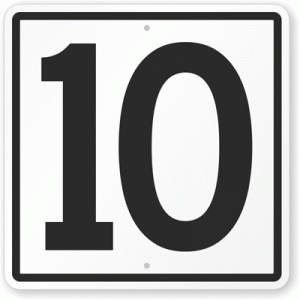Taking Human Nature Into Account Can Increase Conversion Rates
Website visitors react to what they see in very predictable ways. Study after study has shown that how a person encounters a website will have a significant impact on how they react to it. Even with the exact same content, one website layout can increase the chances of conversions while another can make the site more vulnerable to high bounce rates.
A good rule of thumb to follow throughout your entire website layout and design work is to focus on what you want people to do on the page. A big part of conversion rate optimization is to understand the purpose of the page and getting people to have a laser-like focus on the page elements that will push them to do the task you want them to do. Whether it’s signing up for more information or making a purpose, every element on the page should drive a visitor to do just that.
So how do you do this? Here are just a few of the ways that you can increase your likelihood for conversion rate success:
Limit Choices: Too many choices can leave website visitors paralyzed by options, so they wind up doing nothing. Instead of giving visitors multiple different forms to fill out, limit them to one choice. Instead of having all of the different social media sites listed with sharing buttons, limit the page to the few sites that make the most sense for your customers.
Top to Bottom, Left to Right: People read websites like they read newspapers. This means they expect the most important information to be “above the fold”, i.e. above the first half of the page. They also are used to reading left-to-right, which means that you want to make sure that valuable information is on the left side of the page. Keep calls to action and other secondary content on the bottom half of the page. If a person scrolls to this part of the page, chances are that they are ready to take the next step.
Headline Sizes Matter: People are attracted to big, bold headlines that spread across the screen from the top of the page. Design your site so the most important information is encapsulated within a headline at the top of each page.
Use Images: Especially of people. Studies have shown that website visitors react particularly strongly when they see pictures of people on a website.
Think About Usability: If a person can’t navigate your website, they’ll click away rather quickly. Avoid this by utilizing a clean layout with a solid color contrast, plenty of white space and an avoidance of overstuffing the pages with too much clutter.
Keep Ads and Sidebars Away From Main Content: Whether you are selling ad space on your site or have internal links to other pages on your site, you want to keep these elements apart from your main content. Have a clear delineation between the main content and any sidebar content that might pull people away from your main message.

 Posted on June 30, 2014
Posted on June 30, 2014

 Posted on March 20, 2014
Posted on March 20, 2014
 Posted on February 26, 2014
Posted on February 26, 2014
 Posted on February 24, 2014
Posted on February 24, 2014
 Posted on February 5, 2014
Posted on February 5, 2014
 Posted on January 6, 2014
Posted on January 6, 2014